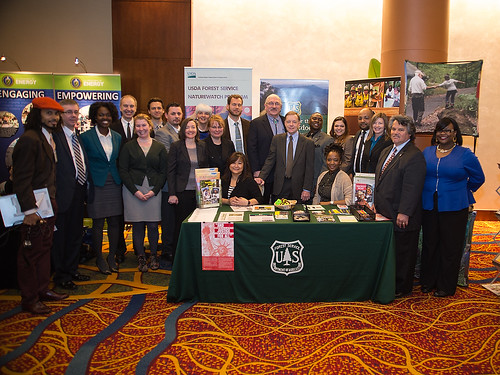
Late last month, I was privileged to deliver the keynote address at the 2014 National Environmental Justice Conference here in Washington.
Environmental justice is “the fair treatment and meaningful involvement of all people regardless of race, color, national origin, or income with respect to the development, implementation, and enforcement of environmental laws, regulations, and policies. It will be achieved when everyone enjoys the same degree of protection and equal access to the decision-making process to have a healthy environment in which to live, learn, and work.”
USDA was one of the first federal agencies identified in the 1994 Executive Order on Environmental Justice (EJ) from former President Bill Clinton due to the broad sweep of the department’s agencies with respect to the environment. The department developed an EJ Strategic Plan and promulgated a Departmental EJ Regulation in 1997.
In 2010, the Environmental Justice Interagency Working group, led by the Council on Environmental Quality and the U.S. Environmental Protection Agency, held its first meeting in more than a decade. Shortly afterwards, then-USDA Under Secretary Harris Sherman convened a meeting of key leadership from across every USDA mission area to set up a working group to review and revise the department’s approach to reflect contemporary issues and opportunities.
Today, environmental justice at USDA refers to meeting the needs of underserved communities by reducing disparate environmental burdens, removing barriers to participation in decision making, and increasing access to environmental benefits that help make all communities safe, vibrant and healthy places to live and work. USDA’s overall goal is not only to institutionalize environmental justice principles but to continuously make a positive difference in the lives of American people.
This year I will lead USDA’s EJ Working Group and will shortly reconvene it. I would very much like USDA’s agencies to focus our efforts on finding opportunities for intra-departmental coordination and collaboration. I am proud of the EJ efforts made at USDA under Secretary Tom Vilsack and former Under Secretary Sherman. While the department’s effort is good, I am even more proud of the EJ efforts by the U.S. Forest Service. They’ve made great strides, completing training guides and holding training meetings. Also, the Forest Service is launching its first (internal) EJ website to share best practices, lessons learned, and educational resources with employees across the nation.
Showcase projects have been identified to demonstrate exemplary Forest Service projects that benefit EJ populations. The intent is to do a better job at capturing the EJ activities that have been established and underway for years and highlight the strengths of those projects and the benefits they provide to communities. An example of that, which will be on the website, is the Urban Tree Canopy Assessment. That is a decision tool so they can plan and manage their urban forest by monitoring current tree canopy closure and developing solutions to increase the forest health of their community.
The Forest Service and USDA as a whole will continue to become a fully inclusive organization: an agency where everyone is welcome, respected, and has equal opportunity to contribute and succeed; an agency that reflects America. This is essential if it is going to serve our diverse communities and compete for the best and brightest candidates in the job market. If its programs are going to serve all American’s equally, fairly, and well.

